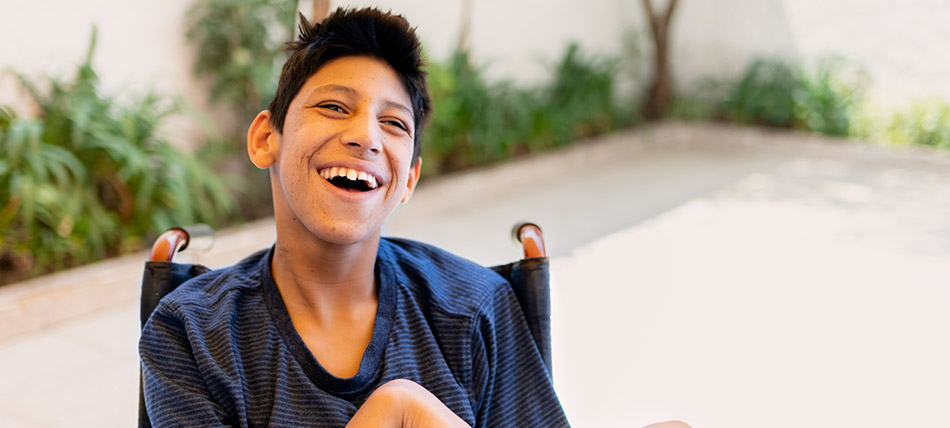
This resource covers
- What is Cerebral Palsy
- Cerebral Palsy Diagnosis
- Are people with Cerebral Palsy eligible for NDIS funding?
- What kind of supports will the NDIS fund for Cerebral Palsy?
- Need help finding NDIS supports for someone with Cerebral Palsy?
What is Cerebral Palsy?
Cerebral palsy is a group of disorders that affect normal movement in different parts of the body. This condition can cause problems with posture, manner of walking (gait), muscle tone, and coordination of movement.
The word “cerebral” refers to the brain’s cerebrum, which is the part of the brain that regulates motor function. “Palsy” describes the paralysis of voluntary movement in certain parts of the body.
There are several types of cerebral palsy that are characterised by the location of the brain injury. Symptoms can vary depending on where and how badly the brain was damaged.
Depending on how the condition is managed, motor skills can improve or worsen over time. While symptoms and severity vary from person to person.
Causes of Cerebral Palsy
Cerebral palsy is caused by damage to the fetal or infant brain. It can be difficult to pinpoint the exact cause of the brain damage, but there are several factors that may cause a child to develop the condition.
Common cerebral palsy causes include:
- Bacterial and viral infections such as meningitis
- Bleeding in the brain (hemorrhaging)
- Head injuries sustained during birth or within the first few years of infancy
- Lack of oxygen to the brain (asphyxia) before, during, or after birth
- Prenatal exposure to drugs and alcohol
- Prenatal exposure to raw/undercooked meat or fish
Cerebral Palsy Diagnosis
Cerebral palsy in babies can cause numerous physical and neurological symptoms that can greatly affect a child's development. These cerebral palsy symptoms can differ for each child depending on the severity and location of the brain damage.
Physical symptoms of cerebral palsy
- Contractures (shortening of muscles)
- Drooling
- Exaggerated or jerky reflexes
- Floppy muscle tone
- Gastrointestinal problems
- Incontinence
- Involuntary movements or tremors
- Lack of coordination and balance
- Problems swallowing or sucking
- Problems with movement on one side of the body
- Stiff muscles (spasticity)
Neurological symptoms of cerebral palsy
- Buildup of cranial pressure due to fluid imbalance (hydrocephalus)
- Behavioral problems
- Delayed motor skill development
- Difficulty with speech and language (dysarthria)
- Sensory impairments
- Visual/hearing impairments
Parents and caregivers should monitor the timeline of their child’s developmental milestones, as babies with cerebral palsy may have developmental delays that go unnoticed.
Are people with Cerebral Palsy eligible for NDIS funding?
Cerebral Palsy is in the List A category of NDIS eligibility, which includes conditions that are likely to meet the disability requirements.
It must have been classed as severe to meet the requirements for List A (for example: assessed as Level 3, 4, or 5 on the Gross Motor Function Classification System – GMFCS).
What kind of supports will the NDIS fund for Cerebral Palsy?
The NDIS offers a wide range of support services to help people with cerebral palsy.
Some examples of NDIS support may include:
- Assistance going to school
- Assistance finding a job
- Behaviour support
- Early Childhood Intervention through the Early Childhood Approach (ECA)
- Exercise physiology and physical well-being services
- Lifestyle supports
- Therapy support
- Accommodation support services
A person’s funding will be determined based on their unique needs, and personal goals and must be considered ‘reasonable and necessary’.
Therapy funding for people with Cerebral Palsy
There are different therapy options to help treat cerebral palsy symptoms. Therapy can be used to improve mobility and brain cognition.
- Physiotherapy: Helps relieve pain and muscle stiffness, as well as improve balance, coordination, and overall mobility. Physical therapists will use specialized equipment to help your child move more freely and live more independently.
- Occupational therapy: Helps children with cerebral palsy learn how to complete everyday tasks and activities by improving fine motor skills and cognitive abilities.
- Speech therapy: Helps children to improve their communication and language skills. This type of therapy gives children the confidence to learn and socialize. Speech therapy can also help children who have difficulty eating and swallowing.
- Alternative therapy: Helps children focus on themselves as individuals and lets them overcome physical and mental obstacles. Alternative therapy includes hippotherapy (which involves riding horses), music therapy, aquatic therapy, acupuncture, and more.
Assistive Technology
The NDIS will fund specialised assistive devices that can help individuals with cerebral palsy that experience issues with communication, hearing, and vision.
Types of assistive devices include:
- Cochlear implants
- Electronic communication boards
- Eye-tracking devices
- Typing aids
- Writing aids
Need help finding NDIS supports for someone with Cerebral Palsy?
The MyCareSpace Connections Team can help you to nagivate the NDIS and find NDIS supports that you need.
NDIS THERAPY FINDER - FREE SERVICE
LET US FIND YOU A SKILLED SUPPORT WORKER

